Submitted:
31 October 2024
Posted:
01 November 2024
You are already at the latest version
Abstract
Keywords:
MSC: 47A55; 93C05; 93C73; 93B05; 65F25
1. Introduction
2. Asymptotic Perturbation Bounds for Controllability Subspaces
2.1. Orthonormal Bases of the Controllable Subspaces
2.2. Perturbation Bounds by the Splitting Operator Method
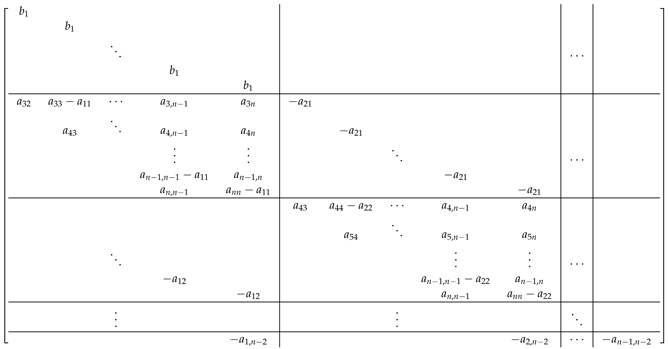
3. Probabilistic Perturbation Bounds for Controllable Subspaces
3.1. Probabilistic Bounds for Random Matrices
3.2. Probabilistic Sensitivity Analysis of Controllable Subspaces
3.3. A Numerical Example
| % | % | ||
| % | % | ||
4. Conclusions
Funding
Institutional Review Board Statement
Informed Consent Statement
Data Availability Statement
Conflicts of Interest
Notation
| , | the set of real numbers; |
| , | the space of real matrices; |
| , | a matrix with entries ; |
| , | the jth column of A; |
| , | the ith row of an matrix A; |
| , | the part of matrix A from row |
| to and from column to ; | |
| , | the strictly lower triangular part of A; |
| , | the matrix of absolute values of the elements of A; |
| , | the transposed of A; |
| , | the inverse of A; |
| , | the zero matrix; |
| , | the unit matrix; |
| , | the perturbation of A; |
| , | the Frobenius norm of A; |
| , | equal by definition; |
| ⪯, | relation of partial order. If , then means |
| ; | |
| , | the subspace spanned by the columns of X; |
| , | the orthogonal complement of U, ; |
| , | the Kronecker product of A and B; |
| , | the probability of the event ; |
| , | the average value or mean of the random variable ; |
| , | the number of the entries of A that are |
| greater or equal to the corresponding entries of B. |
References
- C. A. Bavely and G. W. Stewart, An algorithm for computing reducing subspaces by block diagonalization, SIAM J. Numer. Anal., 16 (1979), pp. 359–367. [CrossRef]
- D. Boley and W.-S. Lu, Measuring how far a controllable system is from an uncontrollable one, IEEE Trans. Automat. Control, 31(1986), 249–251. [CrossRef]
- J.W. Demmel, On Condition Numbers and the Distance to the Nearest Ill-Posed Problem, Numer. Math., 51(1987), 251–289. [CrossRef]
- A. Edelman and N.R. Rao, Random matrix theory, Acta Numer., 14 (2005), pp. 1–65. [CrossRef]
- R. Eising, Between controllable and uncontrollable, Systems & Control Letters, 4 (1984), 263–264. [CrossRef]
- G. H. Golub and C. F. Van Loan, Matrix Computations, The Johns Hopkins University Press, Baltimore, MD, fourth ed., 2013. ISBN 978-1-4214-0794-4.
- J. P. Hespanha, Linear Systems Theory, Princeton University Press, Priceton, NJ, second ed. 2018. ISBN 978-0691179575.
- S. C. Johnson and M. Wicks and M. Žefran and R. A. DeCarlo, The Structured Distance to the Nearest System Without Property P, IEEE Trans. Automat. Control, 63 (2018), 2960–2975. [CrossRef]
- M. Konstantinov and P. Petkov, Perturbation Methods in Matrix Analysis and Control, NOVA Science Publishers, Inc., New York, 2020, https://novapublishers.com/shop/perturbation-methods-in-matrix-analysis-and-control.
- M. Konstantinov, P. Petkov, N. Christov, Invariants and canonical forms for linear multivariable systems under the action of orthogonal transformation groups, Kybernetika, 17 (1981), 5, 413-424. ISSN 0024-5954.
- M. Konstantinov, P. Petkov, N. Christov, Orthogonal invariants and canonical forms for linear controllable systems, IFAC Proceedings Volumes, 14 (1981), 49 -– 54. [CrossRef]
- M. Konstantinov, P. Petkov, D. Gu., I. Postlethwaite, Perturbation analysis of orthogonal canonical forms, Linear Algebra Appl., 251 (1997), 267-291. [CrossRef]
- A. J. Laub and A. Linnemann, Hessenberg and Hessenberg/triangular forms in linear system theory, Int. J. Control, 44(1986), 1523–1547. [CrossRef]
- The MathWorks, Inc., MATLAB Version 9.9.0.1538559 (R2020b), Natick, MA, 2020, http://www.mathworks.com.
- E. Mengi, On the estimation of the distance to uncontrollability for higher order systems, SIAM J. Matrix Anal. Appl., 30(2008), 154–172. [CrossRef]
- C. Paige, Properties of numerical algorithms related to computing controllability, IEEE Trans. Automat. Control, 26 (1981), 130–138. [CrossRef]
- A. Papoulis, Probability, Random Variables and Stochastic Processes, McGraw Hill, Inc., New York, 3rd edition, 1991. ISBN 0-07-048477-5.
- P. Petkov, Perturbation bounds for orthogonal canonical forms and numerical controllability analysis, IEEE Trans. Automat. Control, 38 (1993), 639-643. [CrossRef]
- P. Petkov, Probabilistic Perturbation Bounds of Matrix Decompositions, Numer. Linear Algebra Appl., 31(2024), 1–40. [CrossRef]
- P. Petkov, Probabilistic Perturbation Bounds for Invariant, Deflating and Singular Subspaces, Axioms, 13(2024), 597. [CrossRef]
- G. W. Stewart, Stochastic perturbation theory, SIAM Rev., 32 (1990), pp. 579–610. [CrossRef]
- G. W. Stewart, Matrix Algorithms; Vol. II: Eigensystems, SIAM: Philadelphia, PA, 2001. ISBN 0-89871-503-2.
- G. W. Stewart and J.-G. Sun, Matrix Perturbation Theory, Academic Press, New York, 1990. ISBN 978-0126702309.
- P. M. Van Dooren, The generalized eigenstructure problem in linear system theory, IEEE Trans. Automar. Contr., 26 (1981), pp. 111-129. [CrossRef]
- M. Wicks, R. A. DeCarlo. Computing the distance to an uncontrollable system, IEEE Trans. Automat. Control, 36 (1991), 39–49. [CrossRef]
- W. M. Wonham, Linear Multivariable Control. A Geometric Approach, 3rd ed., Springer-Verlag, New York, 1985. ISBN 0-387-96071-6.
- Z. Yun and Y. Chengwu, Formulae for the distance between controllable and uncontrollable linear systems, Systems & Control Letters, 21(1993), 173–180. [CrossRef]
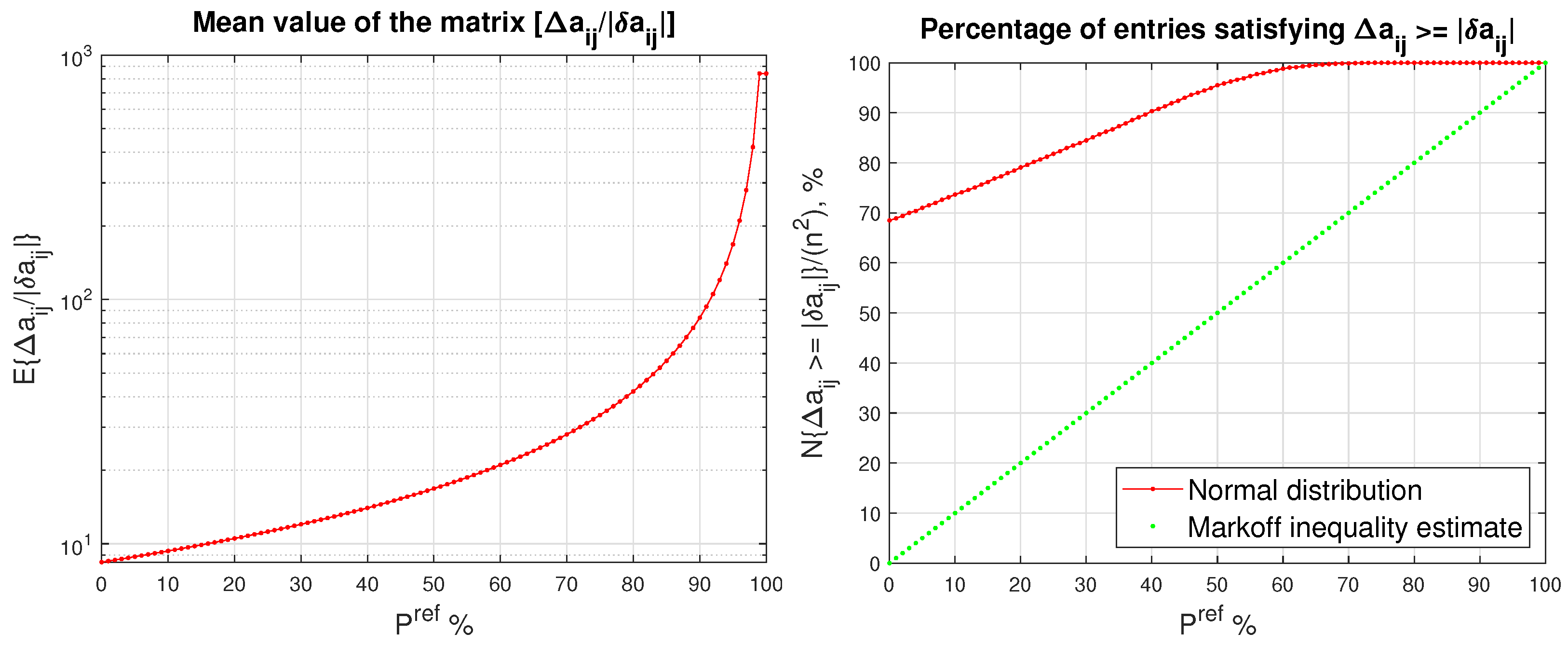
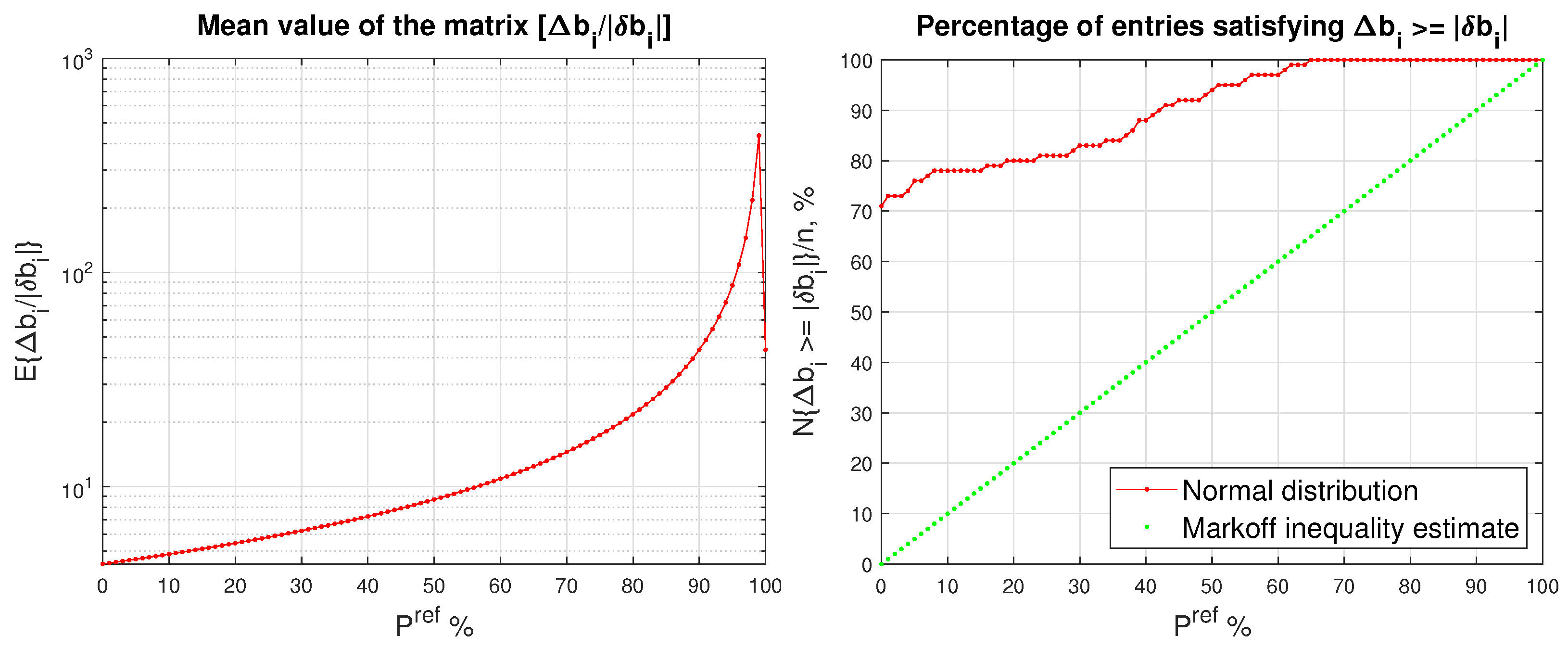
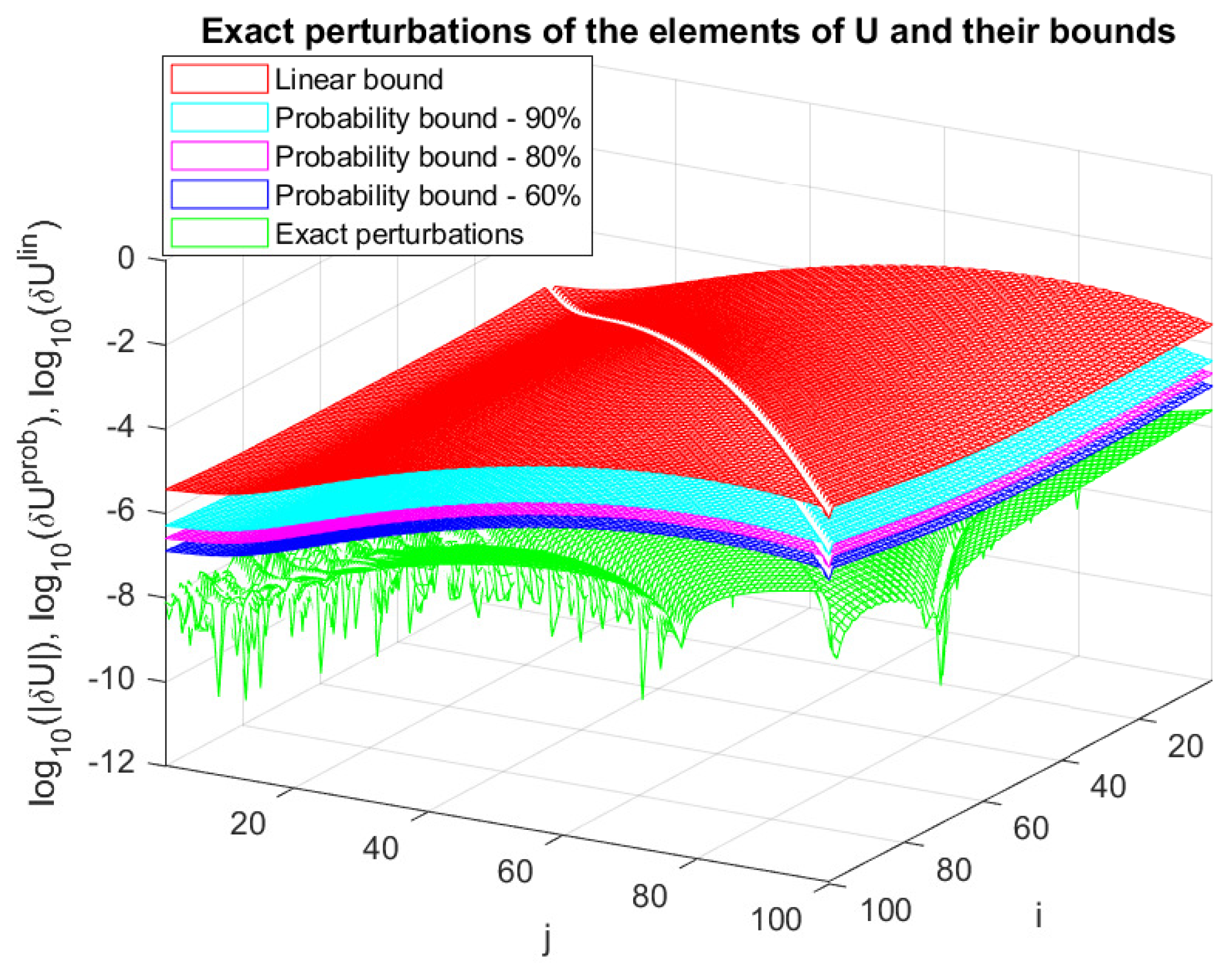
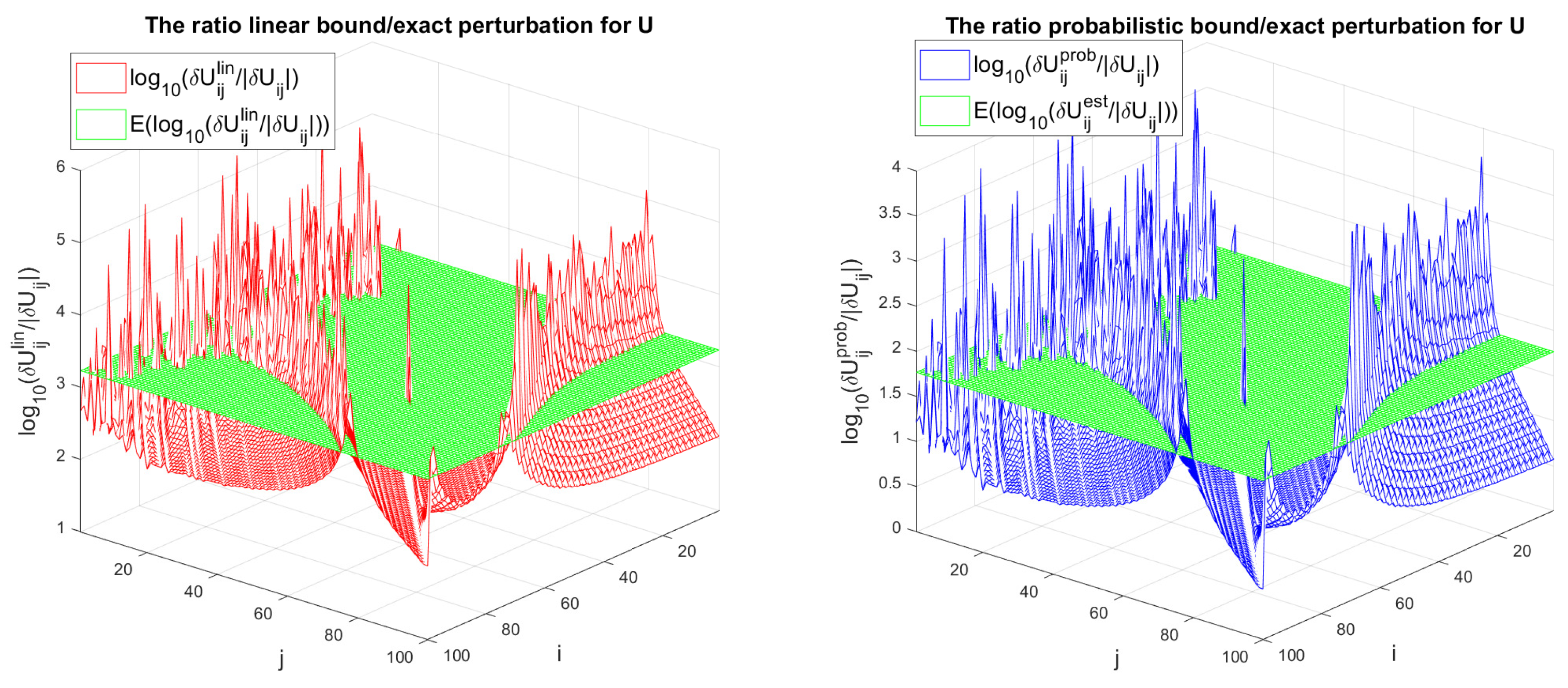
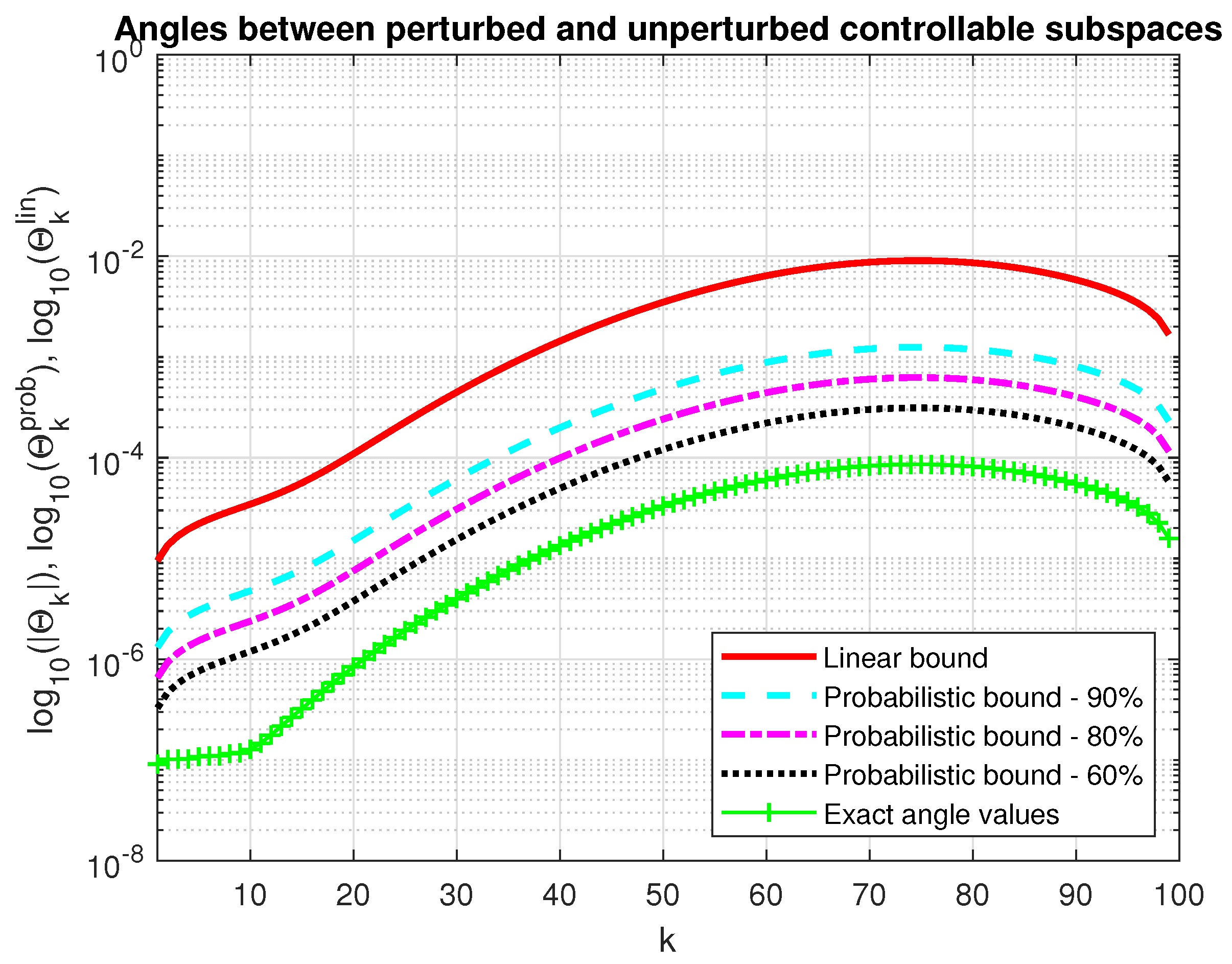
Disclaimer/Publisher’s Note: The statements, opinions and data contained in all publications are solely those of the individual author(s) and contributor(s) and not of MDPI and/or the editor(s). MDPI and/or the editor(s) disclaim responsibility for any injury to people or property resulting from any ideas, methods, instructions or products referred to in the content. |
© 2024 by the authors. Licensee MDPI, Basel, Switzerland. This article is an open access article distributed under the terms and conditions of the Creative Commons Attribution (CC BY) license (http://creativecommons.org/licenses/by/4.0/).





